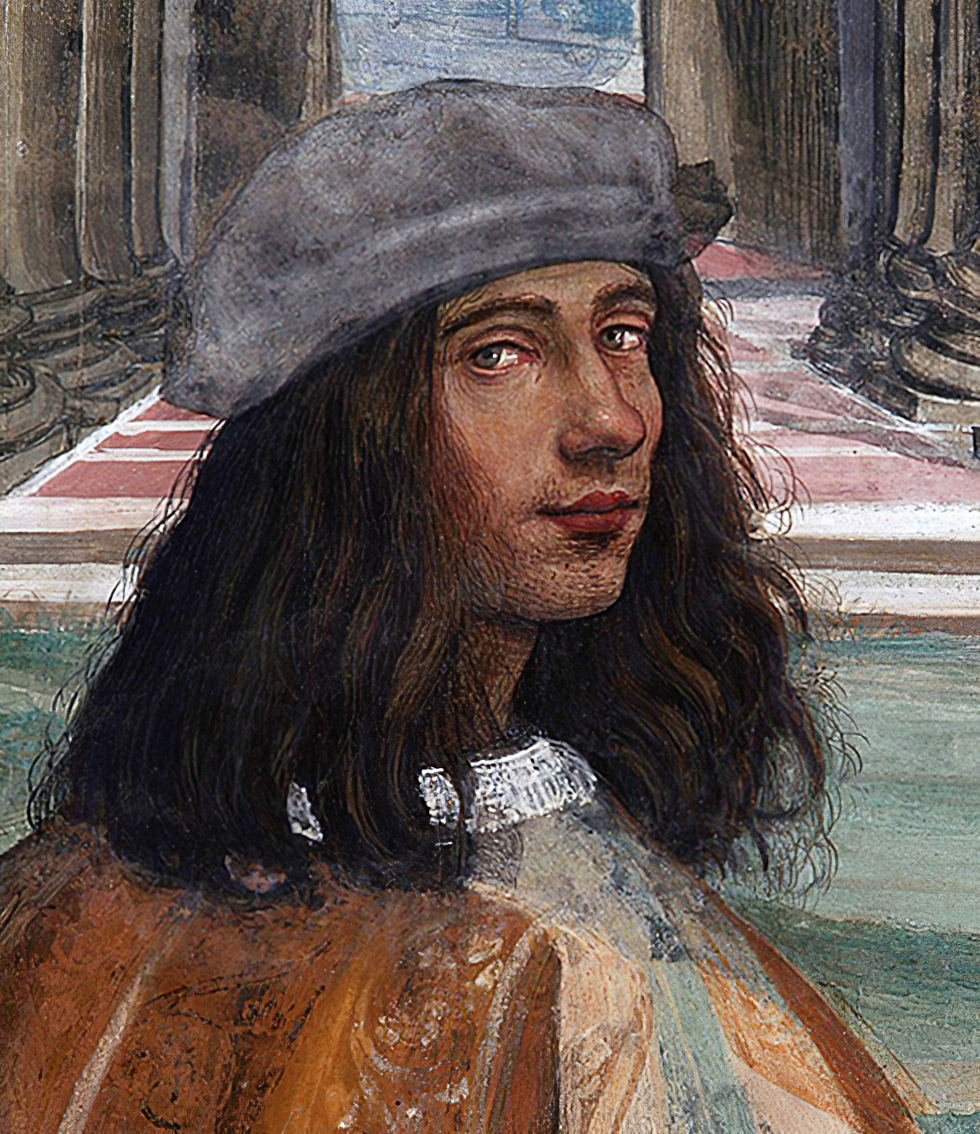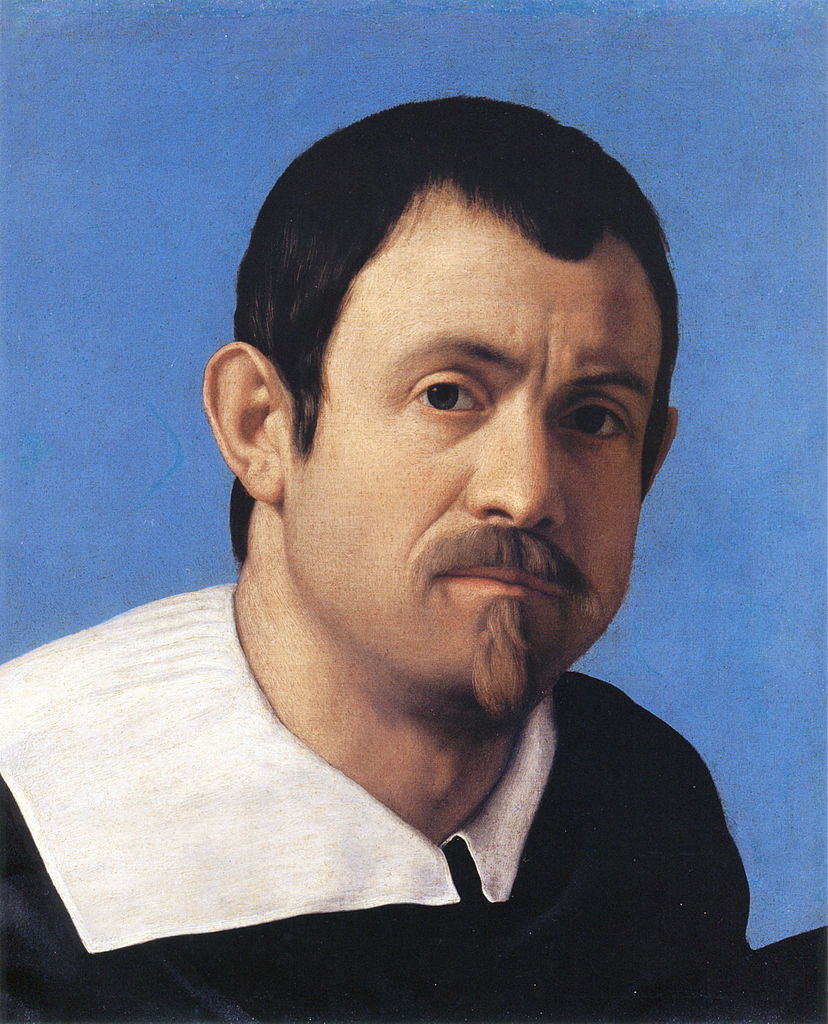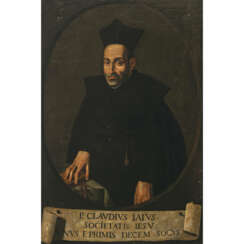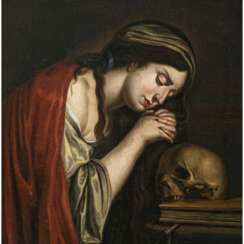
Paintings 15th -18th century — A415: Dezember-Auktion

Bernardino Luini, born in Runo, Lombardy around 1481, remains a significant figure in the 16th-century Lombard school of painting. A key member of the Milanese second Leonardo movement, he, along with Cesare da Sesto and Giampietrino Francesco Melzi, contributed to the essence of this artistic era. Luini's journey into art was accompanied by his marriage to Margherita Lomazzo in 1510. Among their four sons, Giovan Pietro and Aurelio followed their father's footsteps, becoming painters themselves. Influenced profoundly by Raphael's work, Melozzo da Forlì, and Leonardo da Vinci, Luini skillfully blended Leonardo's techniques with his own innovations. His Salome with the Beheading of John the Baptist (Uffizi) draws inspiration from Leonardo's La Scapigliata, while his Holy Family with the Infant John (Prado) echoes Leonardo's lost original sketch of affectionate children.
Luini's artistic journey began with the disputed but noteworthy Madonna with the Child and Two Saints (1507), now exhibited in Paris's Musée Jacquemart-André. One of his remarkable works, Madonna della Buonanotte, can be found in the Chiaravalle Milanese monastery. This painting held a unique purpose – after evening prayers, passing monks would be greeted by the artwork, offering them a peaceful night's rest. In later years, Luini's focus shifted to fresco painting. Notably, his captivating depictions of the Crucifixion in Lugano's Santa Maria degli Angioli church and the small-scale Crucifixion in San Nazario in Dino, a subdivision of Sonvico, are celebrated masterpieces that showcase his skill.
Bernardino Luini's legacy endures as a testament to his mastery of Lombard Renaissance art. His fusion of Leonardo's influence with his own creative brilliance left an indelible mark on the artistic landscape of the 16th century, making him an integral part of the Milanese second Leonardo movement.

Sodoma (Italian: Il Sodoma), born Giovanni Antonio Bazzi, was an Italian painter of the Sienese school of painting.
Il Sodoma belongs to the outstanding masters of the High Renaissance and Early Mannerism.

Daniël Seghers or Daniel Seghers was a Flemish Jesuit brother and painter who specialized in flower still lifes. He is particularly well known for his contributions to the genre of flower garland painting. His paintings were collected enthusiastically by aristocratic patrons and he had numerous followers and imitators.

Giovanni Battista Salvi, known as Sassoferrato, was an Italian Baroque painter born in 1609 in Sassoferrato, from which he derived his name. He is celebrated for his deeply devotional images, particularly of the Virgin Mary, rendered with an elegance that echoes the works of Renaissance masters like Raphael and Perugino. Salvi's commitment to these older styles, amidst the 17th-century Roman art scene, marked his work as consciously anachronistic, emphasizing traditional religious themes and the serene beauty of his subjects.
Sassoferrato's training under his father and possibly under Domenichino in Rome, as well as influences from Guido Reni and Francesco Albani, equipped him with a unique blend of styles. He concentrated on creating multiple copies of devotional images, catering to the private market's demand during the Counter-Reformation. Despite a few public commissions, his legacy includes works in major collections such as the National Gallery in London and the British Royal Collection. Sassoferrato's art, particularly noted for its immaculate execution and spiritual aura, was highly regarded until the mid-19th century and has seen a revival in interest since the late 20th century.
One of his most revered works, "The Virgin in Prayer," showcases Sassoferrato's mastery in portraying the Virgin Mary with a life-like presence, using minimal but vibrant colors to highlight her contemplative grace. This piece, along with others, reflects the Catholic Church's 16th-century reforms advocating for personal devotion, a theme Sassoferrato adeptly captures through his intimate and contemplative religious scenes.
Despite the breadth of his work, Sassoferrato remains a somewhat enigmatic figure, with his art often overshadowing the details of his life and career. Yet, his paintings continue to be a source of admiration for their serene beauty and spiritual depth, appealing to collectors and art enthusiasts alike.
For those interested in exploring the work and legacy of Giovanni Battista Salvi, consider signing up for updates on new discoveries, sales, and auction events related to his art. This subscription ensures that collectors and experts remain informed about opportunities to engage with the timeless beauty of Sassoferrato's masterpieces.

Anthony van Dyck, a Flemish painter born in 1599 in Antwerp and passed away in 1641 in London, is celebrated as one of the foremost Baroque painters of the 17th century. His notable contributions to the art world include his exceptional portraits of European aristocracy, as well as his religious and mythological paintings. Van Dyck's early exposure to art was influenced significantly by his apprenticeship with Hendrik van Balen and later, by the profound impact of working alongside Peter Paul Rubens. His mastery was recognized early on, leading him to set up his own workshop by the age of 15.
Van Dyck's journey to Italy in 1621 marked a pivotal phase in his career, allowing him to immerse himself in studying the Italian masters and commencing his successful stint as a portraitist. His style evolved under the influence of Titian, evident from his vibrant use of color and refined modeling of form. Van Dyck's Italian period not only honed his artistic skills but also established his reputation as a painter of consequence.
Upon returning to Antwerp, van Dyck's portraits became highly sought after, leading to commissions from notable figures such as Archduchess Isabella and Queen Mother Maria de' Medici. His role as a court painter further solidified in England under the patronage of King Charles I, where he was knighted and appointed as the principal painter, profoundly shaping the aristocratic character of Charles I's reign through his portraits.
Van Dyck's legacy extends beyond his death, having influenced English portrait painting for over a century. His innovative techniques in watercolour and etching, along with his sophisticated portrayal of subjects, continue to be admired. His art not only showcases his technical prowess but also reflects the cultural and social nuances of his era, making his work a significant study for collectors and art historians alike.
For enthusiasts eager to explore the intersections of art, history, and culture through the lens of Anthony van Dyck's work, staying informed about new discoveries and auction events is essential. Signing up for updates can provide exclusive insights into the world of one of the most influential figures in Flemish art. This subscription ensures that collectors and experts are well-informed of any developments related to van Dyck's oeuvre, enhancing their understanding and appreciation of his contributions to the art world.

Luca Giordano, born on October 18, 1634, in Naples, emerged as the most celebrated Neapolitan painter of the late 17th century, known for his quick workmanship, which earned him the nickname "Luca Fa Presto" from his father's frequent admonitions to work quickly. His profound contribution to the development of Italianate landscape painting marked a significant chapter in art history.
Giordano's works are celebrated for their dynamic compositions, vibrant color palette, and the ability to infuse his subjects with vitality and emotion. His prolific career saw him working across Italy and Spain, leaving behind a legacy that includes monumental works such as the frescoes in the Palazzo Medici-Riccardi in Florence and the ceiling paintings in Santa Brigida Church in Naples. His late works, lighter and prefiguring the Rococo movement, were particularly influential and admired by later artists such as Fragonard.
Giordano's artistic prowess was not confined to a single genre; his oeuvre includes religious and mythological scenes, landscapes, and portraits. His versatility and ability to adapt his style to suit different subjects and patrons' preferences made him a pivotal figure in the transition from the Baroque to the Rococo style. Despite criticisms of superficiality due to his rapid execution, Giordano's work was fundamentally rooted in a deep understanding of his predecessors, combining the dramatic intensity of the Baroque with the emerging lighter Rococo aesthetic.
For collectors and experts in art and antiques, Luca Giordano's paintings represent a significant period in art history, bridging the gap between two major stylistic periods and reflecting the vibrant cultural exchanges of 17th-century Europe. His works, found in esteemed collections worldwide, continue to be studied and admired for their technical brilliance and artistic innovation.
To explore more about Luca Giordano's masterful contributions to the world of art and to stay updated on exhibitions or sales featuring his work, consider signing up for updates from art institutions. This subscription ensures enthusiasts and collectors are well-informed about developments related to Giordano's oeuvre, enhancing their appreciation and understanding of his enduring legacy.

Guido Reni was an Italian Baroque painter, celebrated for his refined and classical approach to art. Born in Bologna, Italy, Reni's career spanned the late Renaissance and early Baroque periods, where he became known for his religious and mythological scenes. His style, characterized by elegance and grace, set him apart from his contemporaries, making his works highly sought after by both religious and secular patrons.
Reni's training under Denys Calvaert, followed by his time in the Carracci workshop, laid the foundation for his distinctive blend of classical idealism and Baroque dynamism. This education, coupled with his interactions and reported rivalry with Caravaggio in Rome, influenced his development as an artist who could balance the dramatic intensity of the Baroque with a serene classicism.
One of Reni's most famous works, the fresco "Aurora" in the Casino dell'Aurora of Palazzo Pallavicini-Rospigliosi, showcases his mastery of classical forms and his ability to convey narrative through expressive composition and vibrant color. This masterpiece, depicting Apollo's chariot led by Dawn, is celebrated for its simplicity and restraint, contrasting the more elaborate compositions typical of his era.
Reni's contributions to religious art are also significant, with works such as "The Archangel Michael Defeating Satan" and "Saint Joseph and the Christ Child" reflecting his capacity to imbue traditional Christian subjects with a profound sense of divinity and humanity. His paintings are distinguished by their delicate treatment of light and shadow, a hallmark of his refined aesthetic.
Collectors and art experts continue to admire Reni's works for their technical brilliance and emotional depth. His paintings, such as "The Massacre of the Innocents" and "Saint Sebastian," are preserved in major museums worldwide, testament to his enduring influence on Western art. Reni's legacy as a bridge between the Renaissance's ideal beauty and the Baroque's emotive power remains unparalleled, securing his place among the pantheon of great artists.
For collectors and experts in the field of art and antiques, Guido Reni's oeuvre represents not just the pinnacle of Baroque painting but also a connection to the cultural and aesthetic shifts of his time. To stay updated on sales, auctions, and exhibitions related to Guido Reni's works, signing up for updates can provide exclusive insights and opportunities to engage with the legacy of this exceptional artist.



























































